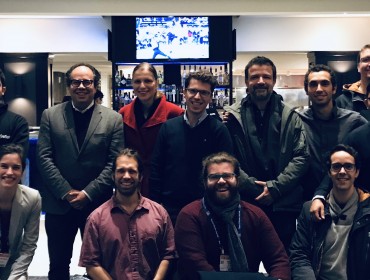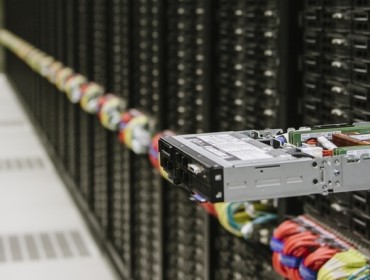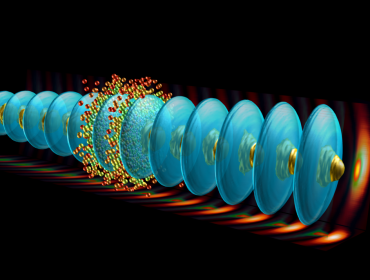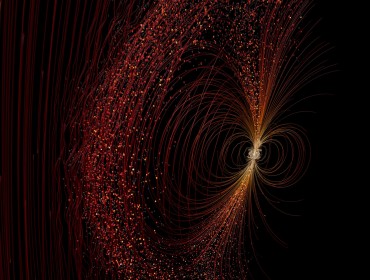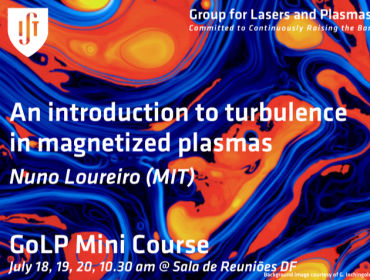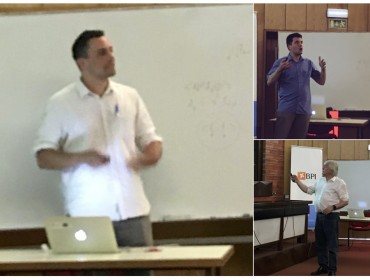-
Frederico F awarded Stix Award at APS DPP 2018
Read moreAt the recent APS DPP 2018 meeting, on November 8 2018, GoLP and epp team alumnus Frederico F was awarded the Stix Award of the APS. Fiuza is the fifth awardee (and the 2nd IST alumni to be awarded this prestigious prize to recognise outstanding early career contributions to plasma physics). Many congratulations to Frederico Fiuza.
November 12, 2018 -
epp team raising the bar at APS DPP 2018
Read moreOur team was present at the APS DPP 2018, with an invited talk by Marija V, and contributed talks and poster presentations by Ricardo F, Kevin S, Thales S, Nitin S, Giannandrea I, Fabio C, and Miguel P. The work by Marija V was featured as a press release of the APS DPP 2018 that was highlighted by several outlets (e.g. ScienceDaily, Phys.org and DOE’s NewsWise). The APS DPP 2018 was also another excellent chance to meet all the GoLP and epp team alumni, friends, and collaborators, and to keep up our commitment to continuously raising the bar.
November 12, 2018 -
epp team awarded multi-year PRACE grant
Read moreOur team has been awarded a multi-year project PRACE allocation in the 17th call for the project PULSAR (first year allocation: 40 million cpu-core hour). This proposal, one of the 42 selected for supercomputing time, addresses the challenges and supports the ERC Advanced Grant InPairs. The allocation is assigned for the great MareNostrum4 at the Barcelona Supercomputing Center. More information here.
September 26, 2018 -
HEDLA 2020 to be organized at IST
Read moreThe Executive Committee of HEDLA has awarded IST the organisation of the next HEDLA meeting to be held in 2020, in the week of May 25 (#HEDLA2020). This will be the 22th anniversary (13th edition) of the HEDLA conference, first organized in Pleasanton, CA in 1996. Previous editions were hosted by Osaka U, SLAC/Stanford, and U. Bordeaux. This conference will be a great opportunity to discuss exciting recent work and future prospects in laboratory astrophysics. During the past decade, research teams around the world have developed astrophysics-relevant research utilizing high energy-density facilities such as intense lasers and z-pinches. Research is underway in many areas, such as compressible hydrodynamic mixing, shock phenomena, magnetic reconnection, turbulence, jets, dynamos, heat conduction, radiative transport, complex opacities, equations of state, warm dense matter, relativistic plasmas, pair plasmas, and QED. HEDLA will showcase these results and will establish further bridges with the astrophysics community.
September 3, 2018 -
AWAKE accelerates electrons
Read moreIn a paper published today, August 29, in the journal Nature, the AWAKE collaboration at CERN, which includes Luis OS, Jorge V, Nelson L, Ricardo F, Mariana M, and Anton H, from GoLP/IST, reports the first ever successful acceleration of electrons using a wave generated by protons zipping through a plasma. The acceleration obtained over a given distance is already several times higher than that of conventional technologies currently available for particle accelerators. First proposed in the 1970s, the use of plasma waves (or so called wakefields) has the potential to drastically reduce the size of accelerators in the next several decades.
The image, by Jorge V, illustrates the concept: the proton beam breaks up in small beamlets (yellow), that drive a plasma wave and the corresponding electric field (blue isosurfaces), that accelerate the co-propagating electrons (small spheres, where color is proportional to the energy of the electrons).
AWAKE,…
August 29, 2018 -
Three papers featured in the new Plasma Physics collection of Nature Communications
Read moreThe new collection of Plasma Physics in Nature Communications features three publications where our team is involved, three of the four sections of the collection (Fundamental Properties of Plasma, Particle Accelerators, and Laboratory and Astrophysical Plasma).
August 9, 2018 -
epp team research featured on Horizons Magazine from the EU
Read moreThe recent issue of the Horizons Magazine, the EU Research & Innovation Magazine features an article about the research of our team in the ERC Advanced Grant InPairs. In the section “Frontier Research”, the article titled “Antimatter plasma reveals secrets of deep space signals“ explores some of the results of two ongoing ERC Advanced Grants, covering both the work at GoLP and the work at the Max Planck Institute for Plasma Physics in Garching, Munich, and how these works bridge the gap between one of the most exotic states of matter (electron-positron plasma) and astrophysical and laboratory conditions.
July 16, 2018 -
GoLP hosts mini course on plasma turbulence by Nuno Loureiro
Read more
On July 18-20 2018, GoLP will host the mini course “An introduction to turbulence in magnetized plasmas”, by Nuno Loureiro (MIT), aimed at introducing basic notions of turbulence in magnetized plasmas to a non-expert audience. The course will be held at Sala de Reuniões DF (Pavilhão Física) at IST, from 10:30 to 12:00. For further details, see the full announcement below.
An introduction to turbulence in magnetized plasmas
Nuno Loureiro
MIT
Host: Luis Oliveira e Silva
GoLP Mini Course
IPFN :: Instituto de Plasmas e Fusão Nuclear
This short course aims to introduce basic notions of turbulence in magnetized plasmas to a non-expert audience. No significant previous knowledge of plasma physics or fluid dynamics is assumed. The course will cover the standard Kolmogorov picture of turbulence in neutral fluids, followed by its extension to magnetohydrodynamics, including the Goldreich-Sridhar (GS95) theory and its recent amendments. The understanding of the latter requires basic notions of magnetic reconnection, which…
July 10, 2018 -
Giannandrea I wins EPS 2018 Best Video in Plasma Physics award
Read moreGiannandrea I has been awarded the EPS 2018 Best Video in Plasma Physics prize at the “45th Conference on Plasma Physics” organized by the European Physical Society and held in Prague (July 2-6 2018). In his video, entitled “Turbulence | Voice of Space”, Giannandrea shows results from recent simulations where plasma in a collisional accretion disk becomes turbulent in the saturation state of kinetic magnetorotational instability (MRI). Besides the mesmerizing turbulent plasma structures, “Turbulence | Voice of Space” also includes a soundtrack that is the sonification of turbulence depicted in the simulations.
July 8, 2018 -
Mini-workshop on strong field physics: from lasers to QCD
Read moreOur team hosted a mini-workshop on strong field physics: from lasers to QCD in collaboration with CeFEMA, including presentations from Sebastien Meuren (Princeton), Thomas G, and Emilio Ribeiro (DF & CeFEMA). The possible connections between QCD and strong field QED were explored with a lively discussion and exploration of possible future directions for research.
June 25, 2018
extreme plasma physics > News


